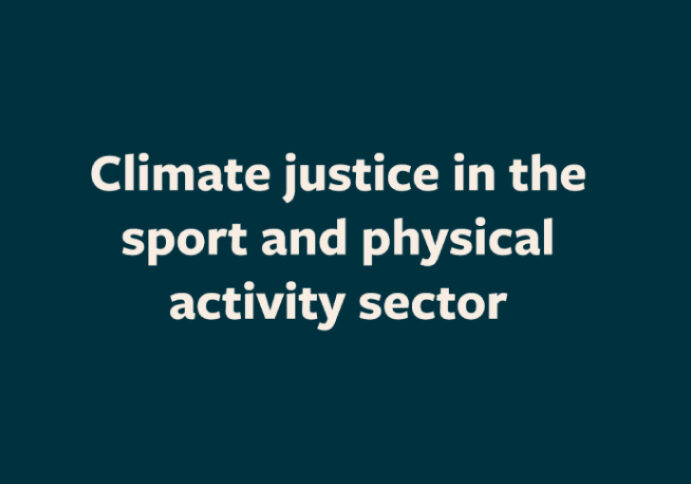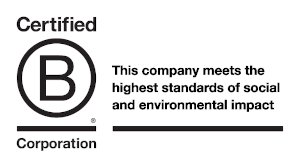The 7th Commonwealth Debate on Sport and Sustainable development propositioned that ‘A compassionate sports sector should enable the charge for a healthy mind, body, and planet’. But what does this really look like? How does climate change link to social justice, and what role does the sports and physical activity sector have?
The recent environmental sustainability consultation undertaken by Useful Projects on behalf of Sport England, Sport Scotland, and Sport Wales, revealed the significance of ‘climate justice’ in the sports and physical activity sector. It was clear that there is an increasing interest in how the environmental and social agendas link, but low levels of understanding.
As such, Useful Projects (as part of our social enterprise mission to help the whole industry progress on big issues), organised a free online lunchtime panel discussion that aimed to start the conversation around climate inequality in the sport and physical activity sector across the UK. The session was held on Wednesday the 2nd of August to coincide with Earth Overshoot Day.
I was delighted to be joined by a fantastic panel: David Gent (CEO at Active Humber), Farah Ahmed (Climate Justice Lead at Julie’s Bicycle) and Denise Ludlam (Environmental Sustainability Strategic Lead at Sport England).
For anyone who would like to watch the full 1 hour recording, you can do so here. For those of you who are short of time (most of you I suspect!), here are the key points.
What is climate justice?
The term ‘climate justice’ has emerged from the idea that climate change will disproportionately impact the poorest and most vulnerable due to systemic inequalities. It reframes climate action from being environmentally focused, to an approach that also addresses social inequalities as part of a ‘just transition’. As David Gent articulated, climate justice encompasses social justice, racial justice, economic justice and environmental justice. Farah added, we are facing a “climate, nature and justice crisis – it is a multifaceted crisis… we need to think of it as an interconnected system”.
How does it relate to sport and physical activity?
The sports sector contributes to climate change (e.g. energy consumption from sports facilities and athlete/spectator travel, and the manufacture and transport of sports kit/equipment). And it will be impacted by climate change. As UK Sport’s new Environmental Sustainability Strategy ‘Team of Tomorrow’ puts it, the future of sport is at risk. At risk from rising temperatures, flooding, drought and extreme weather events affecting participation.
There is strong overlap between individuals who will be most adversely impacted by the effects of climate change and those who face the greatest barriers to participation in sport and physical activity in the UK. A report from the Carbon Disclosure Project found that low-income households, the elderly, marginalised communities, children, and those with vulnerable health will be most vulnerable to climate hazards. The Sport England Active Lives survey found that these same groups (besides children) also tend to participate less in sport and physical activity.
The importance of urban green spaces
Our parks are places where lots of formal and informal sport and physical activity takes place – from football and cricket to a place to run or do an outdoor fitness class. However, as David summarised, the first issue there is a lack of green space for lots of communities who are facing greater inequalities than others – an access issue. The second issue is that people often don’t feel welcome or safe. All of this affects sport and physical activity participation levels. But there is also an opportunity for parks to act as flood plains (preventing houses from flooding) and be a key part of the climate change mitigation and adaptation solution. Planning and designing our urban green spaces to meet multiple social and environmental objectives is a key opportunity.
Stakeholder collaboration and community engagement
A key message from all the panellists was that we need stakeholders to be involved in tackling this agenda – but most of all, we need to be led by the communities themselves. We need to ensure that all affected communities and groups have a role and voice in the decision-making processes regarding climate policies, actions, and interventions.
The power of sport to address social issues and inspire change
The sports sector, and the arts and culture sector have one big thing in common: the tremendous power to inspire and influence social change. That’s why we invited Farah to be part of the panel, with her significant experience advocating for climate justice in arts and culture. She observed, “People are very emotionally connected to sport and that’s something that we’re missing in these conversations about climate – that emotional response. And the feeling of community and connection – there is so much power in that.” Farah has been working with arts and culture organisations to help them think about how they can do more than ‘put on a show’ and be a key community integrator/hub/place at the centre of a community. I think there is a lot that sports venues and organisations can learn from this approach, and indeed, the idea of ‘sports facilities as community hubs’ was a common suggestion we heard during the Sport England/Sport Scotland/Sport Wales consultation on environmental sustainability.
How can the sports and physical activity sector enable climate justice
As a starting point, we need to raise awareness about climate justice and build the sector’s understanding of the agenda. David highlighted the importance of advocacy and enthusiasm in spreading the message.
Denise stressed the importance of an integrated approach with other sectors “what we can’t do is separate out sport and physical activity from our economy or from our environmental, social and cultural circumstances – they need to be integrated”. She also said, “we need systemic change as well as local change” and acknowledged the role of Sport England in being able to influence both through its work.
Denise also gave a simple practical example of a successful grassroots initiative in Yorkshire that supports the social and environmental agendas. Lack of sports kit/clothing can be a barrier to participation for poorer families. By ensuring that surplus sports kit and clothing is distributed to those most in need, it increases sport participation levels and reduces waste.
The role of action plans and strategies to link the environmental and social agendas together was raised – this is something I’m spearheading during the development of Sport England’s Sustainability Strategy (watch this space!), and something that I encourage all sports organisations to think about.
The start of the journey
The intention of this panel discussion was to start the conversation. Following this first webinar, we hope to hold a follow up session where we will hear from community leaders and stakeholders tackling this challenge at the grassroots level. If you have any suggestions for speakers, please get in touch – jo.d@usefulprojects.co.uk




